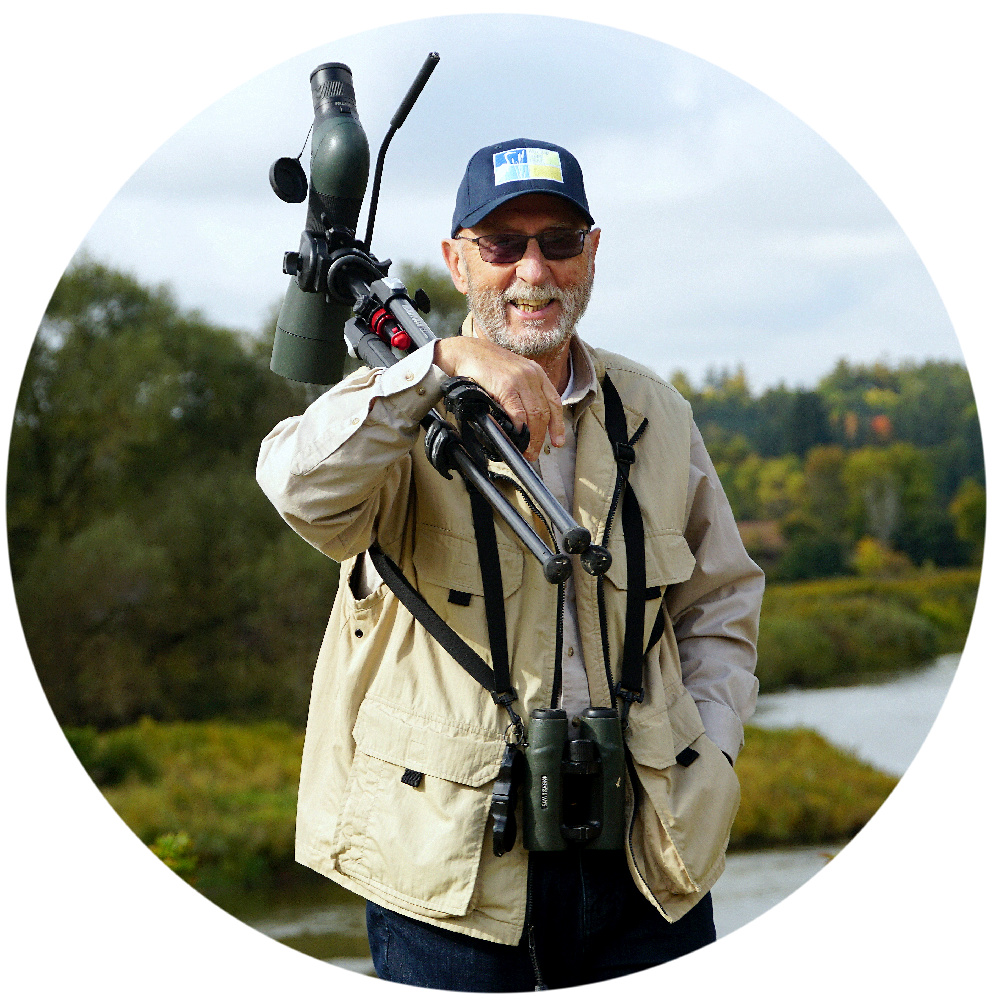08 June, 2025
Grass Lake, Cambridge, ON
We were delighted to have Victoria join us for a pleasant excursion to search for some of the signature birds of the area.
Savannah Sparrow (Passerculus sandwichensis) is almost guaranteed given the abundance of suitable habitat.
Bobolink (Dolichonxy oryzivorus) is suffering from serious loss of habitat throughout its range and is barely hanging on in some locations. Fortunately Grass Lake remains a stronghold for this species.
We heard the "clarion bir-rrrrrrt calls of the adults," (Johnsgard 1981), frustratingly distant, however, but finally a single Sandhill Crane (Antigone canadensis) glided over a distant copse of trees.
A while later we watched a single crane land in a bare field (we assume it was the same bird) and it paraded around for a while much to our delight.
F.W.R. Dickson Wilderness Area, Cambridge, ON
Dame's Rocket (Hesperis matronalis) is an invasive species, yet undeniably beautiful
This ghostly insect has me baffled. It is is the order Lepidoptera but I am unable to tell you more than that.
Song Sparrow (Melospiza melodia) was very common, never shy about approaching a two-legged creature that might have food.
A Great Crested Flycatcher (Myiarchus crinitus) joyfully announced its presence with its characteristic emphatic "weep" call, but it was a few minutes before we spotted it, not well posed for a picture unfortunately.
Eastern Chipmunk (Tamias striatus) is keen to befriend humans and it came as no surprise that several kept us company, and were quick to gather up their share of the sunflower seeds we distributed along the rail.
So many birds perched on snags, silhouetted against a wan sky, making it difficult to get good definition on the photographs, as seen here in this image of a Common Grackle (Quiscalus quiscula).
Northern Cardinal (Cardinalis cardinalis) is sometimes seen in very odd plumages as evidenced by this individual.
Blue Jays (Cyanocitta cristata), on the other hand, did not stray far from the boardwalk where the possibility of food provided by humans was a lure.
Horsetails (genus Equisetum) are a bane to the gardener, but very attractive in their native habitat.
When one sees an Eastern Phantom Crane Fly (Bittacomorpha clavipes) it's sometimes difficult to figure out how all the parts go together!
F.W.R. Dickson Reserve has become a reliable location to find Tufted Titmouse (Baelophus bicolor), a species which I am convinced is undergoing a range expansion, and is almost certainly now breeding locally.
A male Ruby-throated Humingbird (Archilocus colubris) guarded his territory from a high perch and chased away all intruders.
It was far too slender for a potential nest site, so I assume that plentiful insect larvae were there for the taking.
A carpenter ant (genus Campanotus) patrolled up and down the wooden rail, wandering aimlessly as far as we could tell, with no sign of nestmates.
I had the great pleasure recently of meeting the great dipterist, Stephen A. Marshall, and chatting for a while. Would that he had been with me to identify this fly (order Diptera) who seemed to take a liking to my hand.









































.jpg)

















Llegar a tu blog me ha resultado deicioso ¡que belleza! los pájaros me encantan desde niña oir sus cantos me emocionaba, teniamos uno en casa que nos conocia a todos y cantaba sin parar...
ReplyDeleteHe descubierto mucho en tu blog y todo hermoso, cuanto nos presentas tiene su encanto y las fotografias logradisimas
Un placer y un saludo
Muchas gracias, Stella.
DeleteA fantastisc Post. Written with so much enthusiasm that is simply infectious.
ReplyDeleteThank you for sharing such wonderful details of nature.
Have a wonderful week.
Many thanks, Erica.
DeleteA lovely excursion for you...and us trough your post !
ReplyDeleteThanks for sharing !
Always amaze by your knowledge of fauna and flora !
Have an interesting day !
Anna
Dear David,
ReplyDeleteOoooooh! What a stroke of luck to capture that crane up close in the end – such a magnificent shot! 🤩
And once again, you had some lovely sightings of birds and other critters – some posing nicely for you, others making photography a bit more of a challenge, but in the end, it’s the experience that counts most, isn't it?
I hope the Short-horned Click Beetle enjoyed its little holiday in Waterloo! (I’ve heard it’s a lovely place to visit 😉.)
Thank you so much for your kind comment on our adventures with Jamie. I'm trying to introduce our grandson to nature in age-appropriate ways, just like you did with your daughter. At 3½, Jamie is still a bit young to create anything recognizable out of papier-mâché 😄, but I have several large binders from the 1980s filled with animal facts and photos (sorted into mammals, fish, insects, invertebrates, extinct species, etc.). He loves flipping through them, and we talk about the animals – and sometimes about why some of them are now extinct... Sadly, I suspect (or better: I'm sure) that category has grown quite a bit since the '80s. 😢
Sending all the best from Austria,
Traude 🌿
Thanks for taking us along and seeing some of the birds, scenes as plants you saw.
ReplyDeleteGood photos too.
You're right: Hesperis matronalis it's unrivaled in terms of beauty.
ReplyDeleteI didn't know there are so many different kinds of sparrows! That Muscoid fly looks quite impressive.
ReplyDelete...David, nothing misses your eye!
ReplyDeleteWonderful photos David. Great selection of birds and insects. That ghost sure is pretty, blends in so well. Ants are wonderful little things :-D
ReplyDeletethe horsetails are my favorite of the non bird photos. I really like them a lot. Once on the way to doctor visit, I was stopped while a flock of sandhill cranes, about 10 or 12 of them, all sizes, meandered across the road. I was the only car on the street so sat and enjoyed them. the Savannah Sparrow is so cute, and I like small, fat and round and cute birds. i miss wandering along in wooded areas seeking photos.. I get to go with you each time you hike
ReplyDeleteThis post shows you made a pleasant excursion through a beautiful natural environment. Stunning photo of that muscoid Fly.
ReplyDeleteHi, beautiful photos and birds. I like very much the crane and the chipmunk. Greets
ReplyDeleteWhat a splendid journey, David.
ReplyDeleteBirds and more birds, and so much more. What a delight!
I feel so envious that, in my region, there are no protected areas with such biodiversity.
All the best,
JR
Have you had any trouble with ticks on your rambles? I'm interested in that ghostly insect, I wonder what it is?
ReplyDeleteThere are a couple of local areas where ticks are a problem, so we check ourselves carefully when we get home. Most of the areas we frequent have not had ticks - so far!
DeleteHello David,
ReplyDeleteYou always capture nature in a beautiful way, and there is also so much beauty to see in the nature around you. The cranes are large and elegant birds, and the sparrows are small and cute. Viburnum opulus has such beautiful flowers. Thank you for the beautiful picture of the Blue Jays. You are so lucky to see them quite often.
Hugs and kisses, Marit
I always remind them that they have a fervent admirer in Norway, Marit.
DeleteThat's very kind of you, David. I'm sure they enjoy it.
DeleteFascinating post and absolutely gorgeous photos, David. Thank you so much for sharing this journey ❤️
ReplyDeleteOh that crane though! I love their stalking elegance. A feats for the eyes in all those photos David!
ReplyDeleteXO
WWW
Hari OM
ReplyDeleteAnother delightful ramble-by-proxy! Ta.... I wonder if the wee green fluttery is one of the Emerald Moth species? There are a few variations to muse upon... YAM xx
It is quite possible, YAM. I will send the picture to a friend of mine whose very life is consumed by moths!
DeleteDavid, you always inspire people with your blog posts. Sharing your stunning photos and knowledge. Thank you.
ReplyDeleteThanks for the walk. You've featured some of my favorites here including the Bobolink and the Sandhill Crane. I remember seeing them both for the first time - many, many years ago now - at the Attwater Prairie Chicken National Wildlife Refuge on the Texas coast. And, for good measure, you have included what is probably my very favorite bird, the Mourning Dove. Theirs is the first voice I hear when I step outside almost any day of the year and its always a reassurance that, no matter what is going on in the world, all is well.
ReplyDeleteIt’s comforting that we are both able to hear Mourning Doves, Dorothy. What a great connection!
DeleteThat muscoid fly looks like he has gold rims around his eyes. That's quite a good photo. And hummingbirds do stand out when they're perched, even when their so small. You had a great bird viewing walk, and just like the beetle, we all need a change of scenery at times for certain. hugs-Erika
ReplyDeleteHi David - welcome back, glad you had a happy time with the family - the peace of home. The Sandhill Crane is magnificent ... beautiful ... cheers Hilary
ReplyDeleteWhat beautiful pictures of the different types of birds David.
ReplyDeleteThe eastern chipmunk is my favorite this time.
I wish you a nice weekend.
Greetings Irma
Chipmunk is a favourite with everyone, Irma.
DeleteThank you so much David for the walk to this fantastic place with such wonderful photos of these beautiful creatures!
ReplyDeleteEven the fly looks so beautiful through the lens!!
The cardinal is fantastic as well as the magpie....
Even a fly would be difficult to swat when seen through your eyes, David. :)
ReplyDeleteI will take that as a compliment!
DeleteAnother splendid spot with good sightings. I've never seen a bobolink before!
ReplyDeleteNot an easy bird to find, Jeanie.
DeleteExcellent photos as always.
ReplyDeleteAnother enjoyable walk, David, for you and us as you shared the sights. The close up of the fly was quite interesting as it seemed quite a patient subject.
ReplyDeleteIf you hadn't told me the Eastern Phantom Crane Fly was a single insect (at least, I think that's what you indicated) I would have thought it was two different species of bug wrestling with each other.
ReplyDeleteI think that a spider is attempting to subdue the crane fly.,
DeleteA lovely post and photographs.
ReplyDeleteIt was interesting to see the different kinds of sparrows.
All the best Jan
David, thanks for sharing and identifying all these wonderful birds and other little creatures. I'm surprised that the Eastern Chipmunk hung around you. I see chipmunks in upstate NY where my son lives but they run and hide the minute they see us. I enjoyed retaking the journey with you...
ReplyDeleteThey are easily coaxed to feed from your hand.
DeleteHello David, what a great diversity of birds and insects. But in this case the Crane is amazing and you were so lucky it came down nearby so you all could enjoy it.
ReplyDeleteThank you for "taking us" with you on your trip. One day perhaps I will ....
Warm regards,
Roos
I hope that one day we will be able to enjoy nature together, Roos. It would bea dream come true.
DeleteHello David,
ReplyDeleteanother report with everything that makes the heart of a nature lover beat faster, I enjoyed reading the post. Greetings Frank
You find beauty everywhere! Even if it is not the prettiest thing, your words and photos depict beauty! How wonderful nature is!
ReplyDeleteI had a large click beetle land near me once. It was the most interesting thing!
ReplyDeleteTodas las aves me encantan, pero especialmente me gustó la grulla canadiense, es muy distinta a la que tenemos por aquí. Gracias y abrazos.
ReplyDeleteA beautiful spring outing. Everything looks splendor. I especially liked the crane and the squirrel, species that don't exist where I live, by chance.
ReplyDelete